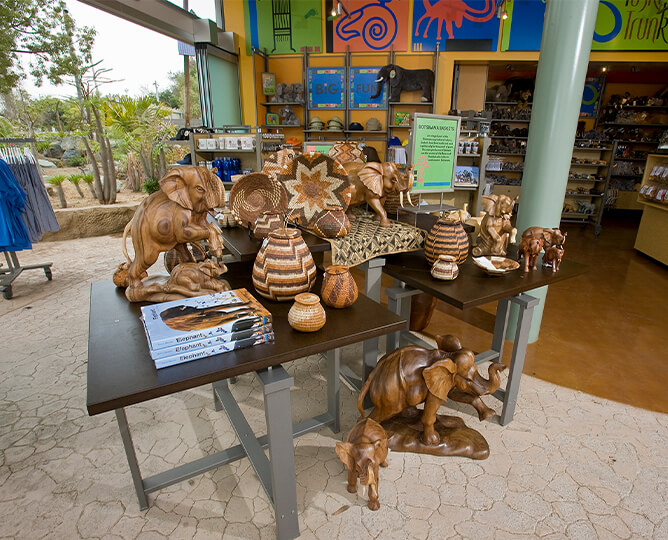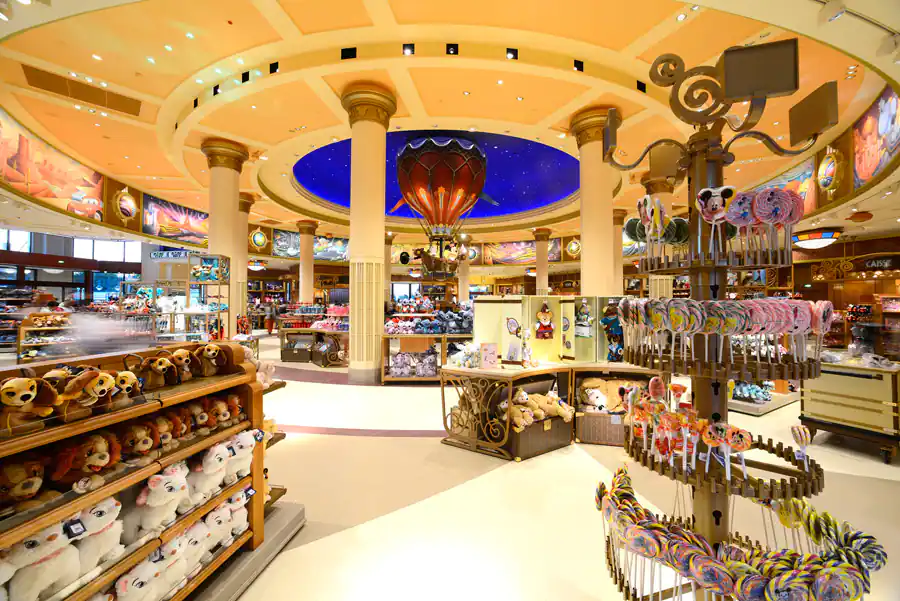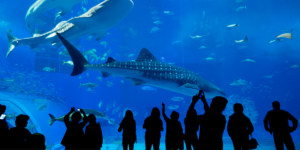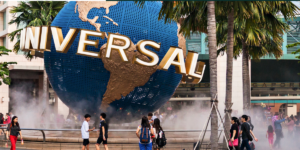As a zoo, theme park, or tourist attraction, retail merchandising plays a crucial role in creating memorable experiences for your visitors. More than just selling souvenirs, retail merchandising is about offering visitors a tangible reminder of the fun they had at your attraction. With thoughtful planning and execution, your retail merchandising strategy can help turn casual visitors into lifelong customers.
In this blog post, we will explore the importance of retail merchandising in visitor experiences, key components of successful merchandising strategies, and examples of how some of the world’s leading attractions are using merchandising to create magical memories for their guests. So let’s dive in and learn how to transform your visitors into customers through the magic of retail merchandising!
The Importance of Retail Merchandising in Visitor Experiences
Retail merchandising is essential for zoos, theme parks, and tourist attractions because it directly impacts visitors’ perceptions of your brand. When guests have a positive experience at your attraction, they are more likely to purchase souvenirs and other merchandise, which in turn can generate significant revenue for your business.
Furthermore, retail merchandising plays a critical role in extending the visitor experience beyond the walls of your attraction. By offering memorable and unique souvenirs, you give visitors a physical reminder of their time spent with you, which can help build brand loyalty and encourage repeat visits. In addition, well-executed retail merchandising can create a sense of discovery and excitement for your guests, making their visit even more enjoyable.
Lastly, retail merchandising can also help to differentiate your attraction from competitors. By offering exclusive merchandise and unique retail experiences, you can set your brand apart in the minds of visitors, making it more likely that they will choose to return to your attraction in the future.
Key Components of a Successful Merchandising Strategy
A successful retail merchandising strategy for zoos, theme parks, and tourist attractions is built on several key components. First and foremost, it is essential to have a deep understanding of your target audience. Knowing who your visitors are, what they want, and what motivates them to make purchases will enable you to create a merchandising strategy that resonates with them.
Next, it is crucial to develop a strong visual merchandising plan. This includes creating eye-catching store layouts and displays, which will draw visitors into your gift shops and encourage them to explore your merchandise. Additionally, the design of your retail space should be consistent with your overall brand identity, further reinforcing the emotional connection between your visitors and your attraction.
Product selection and pricing are also critical factors in a successful merchandising strategy. Your merchandise mix should include a variety of items that appeal to your target audience, while also offering a range of price points to accommodate different budgets. It’s also essential to focus on creating memorable and unique souvenirs, which will help to differentiate your attraction from competitors.
Staff training and customer service are additional components of a successful merchandising strategy. Your retail employees should be knowledgeable about your products and have the skills to engage with visitors in a friendly and helpful manner. This will not only lead to increased sales but also help to create positive memories for your guests.
Finally, integrating technology into your merchandising strategy can help to further enhance the visitor experience. From mobile apps and virtual reality experiences to interactive displays and self-checkout kiosks, there are numerous ways that technology can be used to elevate your retail offerings.
Visual Merchandising: Creating an Enticing Store Layout
Visual merchandising is the art of arranging products and creating store displays in a way that attracts and engages customers. In the context of zoos, theme parks, and tourist attractions, effective visual merchandising is essential for drawing visitors into your gift shops and encouraging them to explore your merchandise.
To create an enticing store layout, start by thinking about the overall flow of your retail space. This involves considering how visitors will move through your store and organizing your merchandise in a way that encourages them to browse and discover new items. This can be achieved by using a mixture of straight and curved fixtures, creating distinct product zones, and incorporating unexpected elements such as interactive displays and demonstration areas.
Next, consider the use of color in your store layout. Color is a powerful tool that can be used to evoke emotions and create a specific atmosphere, which can ultimately influence your visitors’ purchasing decisions. For example, bright colors such as red, orange, and yellow can create a sense of excitement and energy, while cooler colors like blue and green can evoke feelings of calm and tranquility. Choose a color palette that reflects your brand identity and the mood you want to create in your store.
Lastly, focus on creating eye-catching displays that showcase your merchandise in the best possible light. This can include using mannequins, props, and lighting to create visually appealing vignettes that tell a story about your products. Remember, your goal is to captivate your visitors and entice them to explore your merchandise further.
Product Selection and Pricing for Gift Shops
When it comes to selecting products for your gift shops, it’s essential to keep your target audience in mind. Consider the demographics of your visitors, their interests, and the types of experiences they are seeking at your attraction. This will help you to choose merchandise that resonates with your guests and encourages them to make purchases.
In addition to offering a range of products that appeal to your target audience, it’s also important to consider the price points of your merchandise. Offering items at various price points will ensure that there is something for everyone, regardless of their budget. This can include low-cost items such as keychains and magnets, mid-priced products like t-shirts and hats, and higher-priced items like collectible figurines and artwork.
When selecting products for your gift shops, it’s also crucial to focus on creating memorable and unique souvenirs. This can include offering exclusive merchandise that is only available at your attraction or collaborating with local artists to create one-of-a-kind items. By offering unique souvenirs, you can differentiate your attraction from competitors and give your visitors a reason to choose your gift shops over others.
Creating Memorable and Unique Souvenirs
Unique and memorable souvenirs are the cornerstone of any successful retail merchandising strategy for zoos, theme parks, and tourist attractions. To create souvenirs that your visitors will treasure, start by thinking about the experiences and emotions that characterize your attraction. This could include the thrill of riding a roller coaster, the joy of seeing a favorite animal up close, or the awe of witnessing a breathtaking view.
Next, consider how you can translate these experiences into tangible products. This might involve creating custom artwork or illustrations, developing exclusive product lines, or partnering with local artisans to produce one-of-a-kind items. The goal is to create souvenirs that not only capture the essence of your attraction but also stand out from the generic merchandise typically found in gift shops.
Finally, don’t forget to consider the practical aspects of your souvenirs. While it’s essential to create visually appealing and emotionally resonant products, it’s also crucial to ensure that your items are functional and of high quality. By offering souvenirs that are both beautiful and useful, you can increase the likelihood that visitors will use and display them, further extending the reach of your brand.

Staff Training and Customer Service in Retail Merchandising
Staff training and customer service are critical components of a successful retail merchandising strategy. Your retail employees are the front-line ambassadors for your attraction, and their interactions with visitors can directly impact the success of your gift shops.
To ensure that your retail staff is equipped to provide top-notch customer service, start by developing a comprehensive training program. This should include product knowledge, sales techniques, and best practices for engaging with visitors. Additionally, consider incorporating empathy and emotional intelligence training, which can help your employees to connect with visitors on a deeper level.
Once your staff is trained, it’s essential to provide ongoing support and reinforcement. This can include regular check-ins, performance evaluations, and opportunities for continuing education and professional development. By investing in your employees’ growth and development, you can ensure that they are motivated and engaged, which will translate into better customer experiences.
Integrating Technology in Merchandising at Attractions
Integrating technology into your retail merchandising strategy can help to create a more engaging and immersive visitor experience. There are numerous ways that technology can be used in zoos, theme parks, and tourist attractions, from mobile apps and augmented reality experiences to interactive displays and self-checkout kiosks.
For example, some attractions have developed mobile apps that provide visitors with real-time information about exhibits, showtimes, and special events. These apps can also include features that allow visitors to purchase tickets or merchandise directly from their smartphones, reducing wait times and increasing convenience.
Augmented reality experiences are another popular way to incorporate technology into retail merchandising. By using AR technology, visitors can interact with virtual versions of your products, try them on or see how they would look in their homes before making a purchase. This can help to create a more immersive and engaging shopping experience, encouraging visitors to spend more time in your gift shops.
Finally, interactive displays and self-checkout kiosks can help to streamline the purchasing process, reducing wait times and increasing convenience for visitors. These technologies can also help to free up your retail staff to focus on providing exceptional customer service, further enhancing the visitor experience.

Examples of Successful Merchandising at Zoos, Theme Parks, and Tourist Attractions
There are numerous examples of zoos, theme parks, and tourist attractions that have developed successful retail merchandising strategies. One such example is Disney, which is renowned for its immersive and memorable retail experiences. From the iconic mouse ears to exclusive merchandise lines tied to popular franchises like Star Wars and Marvel, Disney’s retail offerings are carefully curated to appeal to its diverse audience. Disney even has third party retail shops like Alex and Ani as anchor retail partners in order to increase shopping appeal.
Another example is the San Diego Wildlife Alliance, which has developed a comprehensive retail merchandising strategy that extends beyond its gift shops. The zoo’s retail offerings include custom-designed merchandise, exclusive collaborations with local artists, and even a line of branded coffee. These products help to extend the visitor experience beyond the zoo’s walls, creating a sense of connection and loyalty among its guests.
Transforming Visitors into Customers through Retail Merchandising Magic
In conclusion, retail merchandising is a critical component of creating memorable visitor experiences at zoos, theme parks, and tourist attractions. By focusing on key components like visual merchandising, product selection and pricing, unique souvenirs, staff training and customer service, and technology integration, you can create a retail strategy that resonates with your target audience and transforms casual visitors into lifelong customers.
By studying successful examples like Disney and the San Diego Zoo, you can gain insights into best practices and develop a merchandising strategy that sets your attraction apart from competitors. So what are you waiting for? It’s time to harness the power of retail merchandising magic and create unforgettable experiences for your visitors!
Photos courtesy of Disney and San Diego Wildlife Alliance




